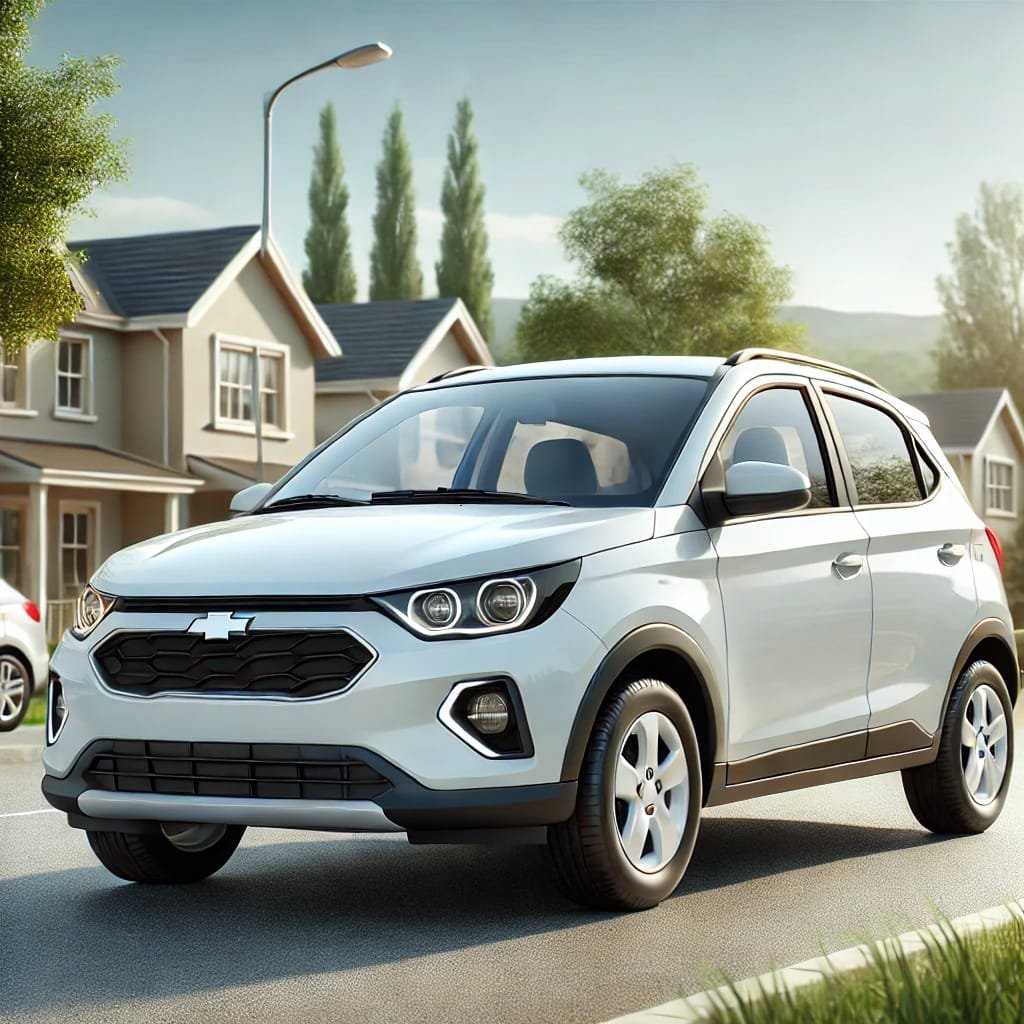
India’s automotive industry is at a pivotal moment in its history, characterized by rapid growth, technological innovation, and a strong push towards sustainability. Prime Minister Narendra Modi, in his written address to the annual convention of the Society of Indian Automobile Manufacturers (SIAM), underscored the critical role that the automotive sector will play in driving economic growth and achieving the nation’s long-term development goals. He emphasized the need for India to adopt global best practices while also prioritizing green and clean mobility solutions to ensure sustainable progress.
This article delves into the Prime Minister’s vision for the automotive industry, the challenges and opportunities it faces, and the road ahead for achieving a sustainable, future-ready mobility ecosystem in India.
A Call for Global Best Practices
Prime Minister Modi urged the Indian automotive sector to integrate global best practices into its operations and strategies. This call is a reflection of India’s ambition to become a major global player in the automotive space. By adopting these practices, the sector can enhance its efficiency, quality, and competitiveness on the world stage.
- Quality and Standards Alignment: To compete globally, Indian automakers must align their products with international standards for safety, emissions, and quality. This involves adhering to stringent regulatory norms that govern automotive manufacturing worldwide. By doing so, India can enhance its exports, attract foreign investment, and establish itself as a hub for automobile production.
- Innovation and Technological Advancement: The integration of advanced technologies such as artificial intelligence, machine learning, and IoT in manufacturing processes can significantly enhance productivity and reduce costs. Leveraging these technologies will also enable automakers to develop innovative products that cater to the evolving demands of global consumers.
- Collaborative Ecosystems: The Prime Minister emphasized the importance of collaboration among all stakeholders, including manufacturers, policymakers, suppliers, and international partners. A collaborative approach will foster knowledge exchange, drive technological advancements, and create a robust ecosystem that can respond to global market dynamics.
- Focus on Sustainability: As the global market shifts towards sustainable and eco-friendly solutions, India must also align its strategies accordingly. This involves the adoption of clean technologies, efficient manufacturing processes, and the development of vehicles that meet global environmental standards.
The Shift Towards Green and Clean Mobility
Prime Minister Modi highlighted the need for India’s automotive industry to focus on green and clean mobility solutions. This aligns with the government’s broader vision of achieving carbon neutrality and reducing the environmental impact of transportation.
- Electric Vehicles (EVs): The shift towards electric vehicles (EVs) is a cornerstone of India’s strategy for green mobility. The government has implemented several initiatives, such as the Faster Adoption and Manufacturing of Hybrid and Electric Vehicles (FAME) scheme, to promote the adoption of EVs. This includes incentives for manufacturers and consumers, investments in charging infrastructure, and research into advanced battery technologies.
- Hydrogen Fuel Cells: Apart from EVs, the government is also exploring alternative fuel options, such as hydrogen fuel cells. These cells provide a clean and efficient energy source for vehicles, with water vapor as the only byproduct. India’s automotive sector has the potential to become a leader in hydrogen fuel technology by investing in research and development and collaborating with international partners.
- Hybrid Vehicles: Hybrid vehicles, which use a combination of internal combustion engines and electric motors, offer a transitional solution towards full electrification. They reduce fuel consumption and emissions, making them an attractive option for both consumers and manufacturers.
- Improving Fuel Efficiency: The Prime Minister’s call for green mobility also involves improving the fuel efficiency of internal combustion engine (ICE) vehicles. Automakers can achieve this by adopting advanced engineering techniques, lightweight materials, and fuel-efficient technologies.
- Recycling and Circular Economy: To minimize waste and reduce the environmental footprint of vehicle production, the industry can adopt circular economy practices. This includes recycling materials, repurposing components, and designing vehicles for easy disassembly.
Challenges on the Road to Green Mobility
While the vision for green and clean mobility is ambitious, several challenges need to be addressed to realize this goal:
- Infrastructure Development: The lack of adequate charging infrastructure for EVs remains a significant barrier to their widespread adoption. To overcome this, the government and private sector need to collaborate on developing a comprehensive network of charging stations across urban and rural areas.
- High Initial Costs: The high upfront cost of electric and hydrogen vehicles compared to traditional ICE vehicles is a deterrent for many consumers. Subsidies, tax incentives, and financing options can help mitigate these costs and make green vehicles more accessible.
- Battery Technology and Supply Chain: The development of efficient, affordable, and sustainable battery technologies is critical to the success of the green mobility initiative. India needs to invest in research and development for advanced battery technologies, such as solid-state batteries, and secure a reliable supply chain for raw materials like lithium, cobalt, and nickel.
- Consumer Awareness and Acceptance: Many consumers are still unaware of the benefits of green vehicles or remain skeptical about their performance and reliability. Awareness campaigns, test drives, and incentives can help educate consumers and build trust in new technologies.
- Policy and Regulatory Framework: A clear and consistent policy framework is essential to support the transition to green mobility. This includes setting ambitious emissions standards, providing incentives for green vehicle adoption, and promoting research and innovation in sustainable technologies.
Economic Growth Through the Automotive Sector
Prime Minister Modi emphasized that the automotive industry will continue to drive economic growth in India. The sector’s growth will be fueled by rising demand, technological advancements, and a focus on sustainable practices.
- Job Creation: The automotive sector is one of the largest employers in India, providing jobs across the value chain—from manufacturing and assembly to sales and services. As the industry grows and evolves, it will create new employment opportunities, especially in areas such as EV manufacturing, battery production, and software development.
- Boost to Ancillary Industries: The growth of the automotive sector will also benefit ancillary industries such as steel, rubber, plastics, electronics, and logistics. These industries supply critical components and materials for vehicle production, creating a multiplier effect on the economy.
- Attracting Foreign Investment: By adopting global best practices and focusing on green mobility, India can attract foreign investment into its automotive sector. Multinational companies may be more inclined to set up production facilities in India, bringing in capital, technology, and expertise.
- Export Potential: As India aligns its automotive standards with global benchmarks, it can increase its exports of vehicles and components. This not only boosts revenue but also positions India as a global hub for automotive manufacturing.
- Innovation and R&D: The focus on green and clean mobility will drive innovation and research and development in the automotive sector. This will lead to the creation of new technologies, products, and services that can be leveraged domestically and internationally.
The Success Story of Indian Mobility
Prime Minister Modi highlighted the remarkable growth of India’s automotive sector over the past decade. This growth is a testament to the sector’s resilience, adaptability, and commitment to excellence.
- Infrastructure Development: India has made significant strides in creating future-ready infrastructure, such as state-of-the-art expressways, high-speed railways, and multi-modal connectivity. This infrastructure supports the growth of the automotive industry by enabling efficient movement of goods and people across the country.
- Policy Reforms: The government has introduced several policy reforms to promote the growth of the automotive sector. This includes the introduction of the Goods and Services Tax (GST), the implementation of Bharat Stage VI (BSVI) emission norms, and the establishment of the National Automotive Board (NAB) to drive research and innovation.
- Digital Transformation: The Indian automotive industry has embraced digital transformation, leveraging technologies such as artificial intelligence, big data, and IoT to enhance manufacturing processes, improve customer experiences, and optimize supply chains.
- Rise of Electric and Hybrid Vehicles: The government’s push for electric and hybrid vehicles has led to the launch of several new models by both domestic and international manufacturers. This shift is helping reduce dependence on fossil fuels, lower emissions, and promote energy security.
- Growth of the Two-Wheeler Segment: India is the largest two-wheeler market in the world, driven by affordability, fuel efficiency, and growing urbanization. The segment has witnessed significant growth, particularly in rural areas, contributing to the overall expansion of the automotive sector.
A Holistic Approach to Inclusive Growth
Prime Minister Modi emphasized that India’s growth should be inclusive, benefiting all sections of society. The automotive industry has a crucial role to play in achieving this vision.
- Rural Development: The growth of the automotive sector, particularly the two-wheeler and small car segments, has improved mobility and connectivity in rural areas. This has enabled access to education, healthcare, and employment opportunities, contributing to rural development.
- Affordable Mobility Solutions: By offering a range of affordable vehicles, the Indian automotive industry has democratized mobility, allowing more people to own vehicles and participate in economic activities.
- Focus on Local Manufacturing: The government’s ‘Make in India’ initiative has encouraged local manufacturing and reduced reliance on imports. This has led to the development of a robust domestic supply chain and created jobs across the country.
- Support for Micro, Small, and Medium Enterprises (MSMEs): The automotive sector relies heavily on MSMEs for components, parts, and services. By supporting the growth of these enterprises, the industry contributes to inclusive economic growth.
The Road Ahead for India’s Automotive Industry
As India gears up to achieve its vision of a “Viksit Bharat” (Developed India) by 2047, the automotive industry will play a key role in driving sustainable growth, innovation, and progress. The industry must continue to embrace global best practices, prioritize green and clean mobility, and foster a collaborative ecosystem that includes all stakeholders.
- Commitment to Sustainability: The industry must continue to invest in sustainable practices, including the development of green vehicles, recycling, and reducing emissions.
- Innovation-Driven Growth: Embracing innovation and technology will be critical for maintaining competitiveness in the global market. This includes adopting new manufacturing techniques, leveraging digital tools, and fostering a culture of continuous improvement.
- Building a Skilled Workforce: The automotive industry needs a skilled workforce to drive innovation and growth. Investing in education and training programs will ensure that India has the talent needed to compete globally.
- Strengthening Global Partnerships: Building strong partnerships with international players will help bring global best practices to India and open up new markets for Indian products.
- Policy Support and Incentives: Continued government support in the form of policy reforms, incentives, and infrastructure development will be essential for the sustained growth of the automotive sector.
Conclusion
Prime Minister Narendra Modi’s vision for India’s automotive industry is both ambitious and forward-looking. By embracing global best practices and focusing on green mobility, the industry can not only drive economic growth but also contribute to a sustainable and inclusive future. The path ahead is filled with challenges, but with innovation, collaboration, and determination, India’s automotive sector is well-positioned to lead the way towards a brighter, greener future.





